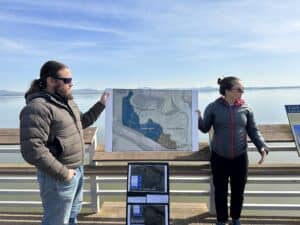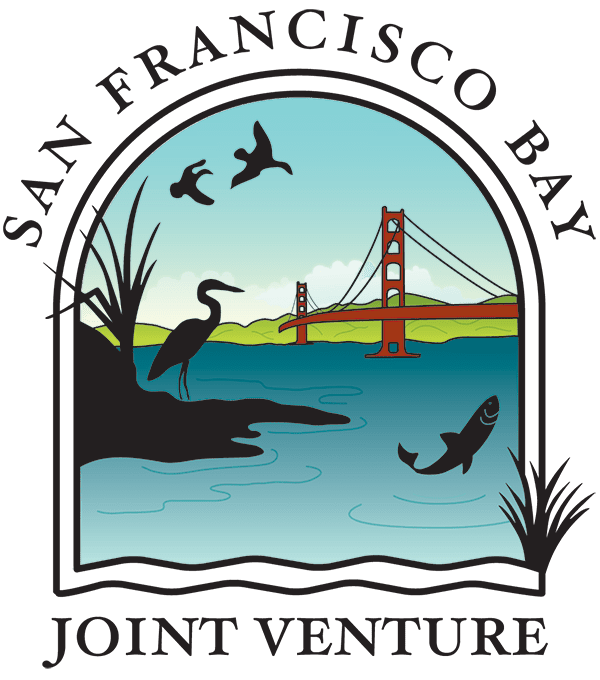This February 2023, the National Migratory Bird Joint Venture Coordinator, Justyn Foth, came to visit and tour project sites around the San Francisco Bay. Not only is Justyn doing a Big Year, but he is also visiting Joint Ventures across the country for the first time since the Covid-19 pandemic began and he took on his new role. Below is a Q&A we had with Justyn about his visit to the SF Bay, the Migratory Bird Joint Venture Program, and of course, his Big Year!
P.S. We also had the honor of celebrating his birthday together in the field, tiara and all!
Q: What was your favorite part about your visit to the SF Bay Area?
A: Seeing a wide variety of landscapes (agriculture, tidal, urban, rural) and partners (state, federal, NGO) that the SFBJV and the Central Valley Joint Venture (CVJV) work with on a regular basis to meet the habitat needs for migratory birds.
Q: What is the SFBJV doing that demonstrates core values of the MBJV program?
A: The SFBJV just finished updating their Implementation Strategy, which demonstrates continued forward progress on meeting the needs of the North American Waterfowl Management Plan and the other major bird plans within your geography. By keeping these and other JV plans/documents up to date, the JV partnership is able to help address existing, new and emerging concerns within the San Francisco Bay.
Q: How does SFBJV’s work compare or contrast to other JVs you’ve had the chance to visit?
A: The SFBJV has similar issues to those of the Atlantic Coast JV (ACJV). Both partnerships are focusing on sea level rise issues and associated marsh migration inland. They also both deal with where to use dredge spoil material for habitat enhancement. However, the Eastern Black Rail is a focal species for the ACJV and a federally threatened species, but data from the SF Bay Area denotes areas of high abundance of Black Rails in this region, demonstrating how species abundance can vary across geographic regions.
It’s great to see cohesion across CA Joint Ventures, such as the SFBJV partnership with the CVJV in the zone of overlapping interest in the Suisun Marsh. Administratively, the SFBJV faces the same issue of limited staffing capacity as other JV partnerships. With each increase in US Fish and Wildlife Service 1234 Funds over the past year, I hope to see the creation of new positions and unique ways to work across geographies to share specialized positions.
Q: What do you want folks to know about the MBJV program?
A: A lot can get done virtually and it’s a great way to make an initial introduction, but getting out in the field was very helpful in better understanding the relationships and projects within the SFBJV and CVJV geographies. Site visits help me grow personally and professionally as the National JV Coordinator. This experience provided me with more examples of the great work the JV partnerships are doing at a local level and will prepare me to be a better advocate for the MBJV program back in Washington DC.
Q: What was the best bird you saw to add to your Big Year list?
A: Had I been better at communicating and planning, it would have definitely been a Black Rail. The best bird I saw within your geography was the Barrow’s goldeneye trio I saw near Bair Island on Redwood Creek. My favorite birding site was definitely the Palo Alto Duck pond and associated wetlands and upland trails.






